Elite soldiers from 5 infantry and 2 cavalry regiments have been guarding the Monarch since 1660. These 7 regiments are called the Household Division. The Changing of the Guard ceremony at Buckingham Palace and St James Palace is a time honoured symbol of the British monarchy and a great example of British pomp and ceremony. Blue Badge Tourist Guides regularly take tourists to see the ceremony, as it is a top favourite on their list of things to see. Here are my Top 10 facts about the Changing of the Guard ceremony, a popular tourist attraction in London.
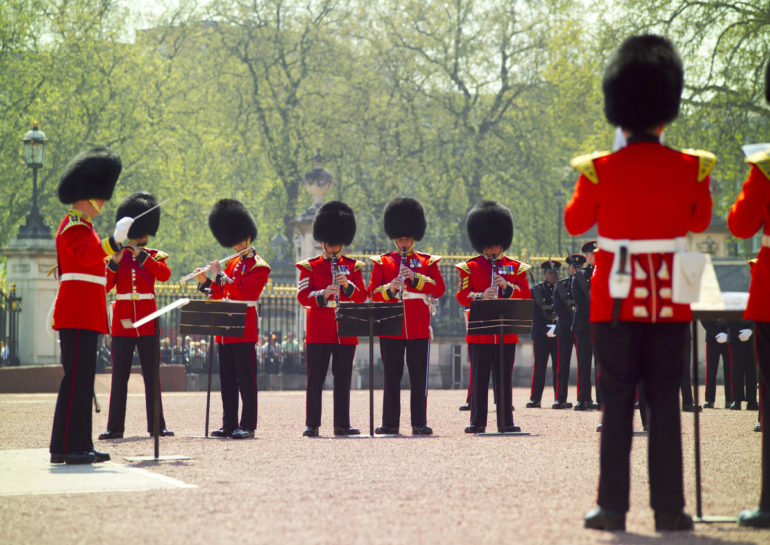 Buckingham Palace: Changing of the Guards. Photo Credit: © London & Partners.
Buckingham Palace: Changing of the Guards. Photo Credit: © London & Partners.
1. The bright red tunics of the guardsmen are very recognisable and make the guards look extremely smart. But the reason for choosing the colour red is more practical – it was one of the cheapest dyes to make. Red is the most difficult colour to see and at a distance the tunics would merge into one bright block of colour meaning the enemy could not count the numbers of British troops they were about to fight.
2. The ceremony is accompanied by marching military bands whose origins go back to playing morale boosting music before a battle and providing a beat with which to march into battle. During the ceremony the bands will play a mix of military music and popular modern tunes.
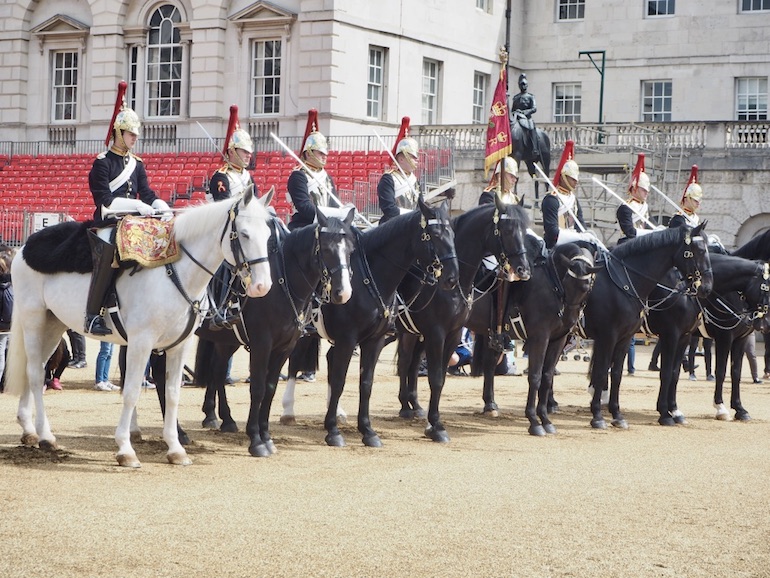 London St James’s Park – Horse Guard Parade: Changing of the Guard. Photo Credit: © Ursula Petula Barzey.
London St James’s Park – Horse Guard Parade: Changing of the Guard. Photo Credit: © Ursula Petula Barzey.
3. On the Queens official birthday the guards take part in the Trooping of the Colour Ceremony at Horseguards Parade. The regimental flags or colours are paraded in a historic ceremony going back to the 1600s. In a battle the flags or colours are a rallying point for the troops and so were regularly paraded slowly in front of them to ensure the troopers recognised their own regimental colour or flag.
4. The five infantry regiments guarding the Monarch all wear similar red and black uniforms. To distinguish between the regiments the tunic buttons are positioned either singly, or in pairs, threes, fours or fives. Additionally there is a small emblem on their collar, for example the Scots guards have a thistle which is their national flower.
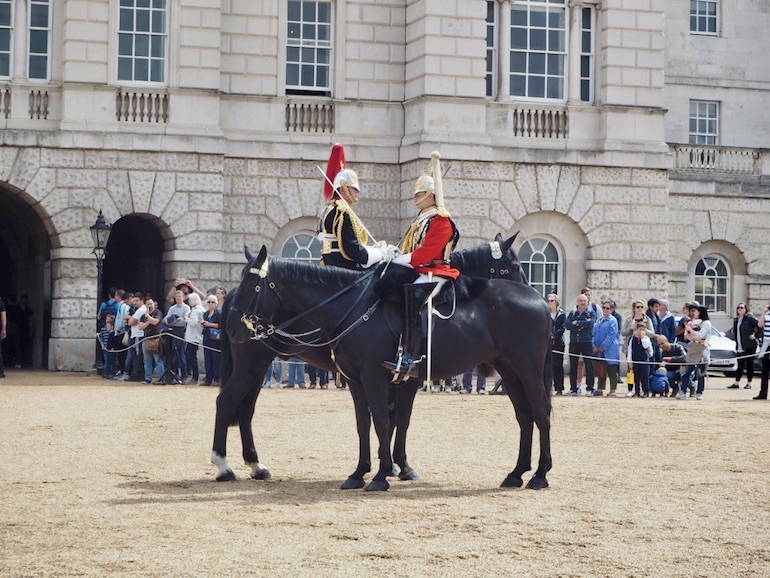 London St James’s Park – Horse Guard Parade: Changing of the Guard. Photo Credit: © Ursula Petula Barzey.
London St James’s Park – Horse Guard Parade: Changing of the Guard. Photo Credit: © Ursula Petula Barzey.
5. Detachments of guards are also stationed at Windsor Castle where the Monarch lives and at the Tower of London as it is a Royal Palace and where they also guard the Crown Jewels. Take care if they are marching to their posts as they take precedence over you – you will know if you are in the way as you will hear an almighty shout of “Make way for the Queen’s Guard!”.
6. The guards are devoted to their duty of protecting the Monarch and therefore will not acknowledge you or allow themselves to be distracted by you. Young children really enjoy the challenge of trying to get a reaction from a guard by pulling faces or telling a joke.
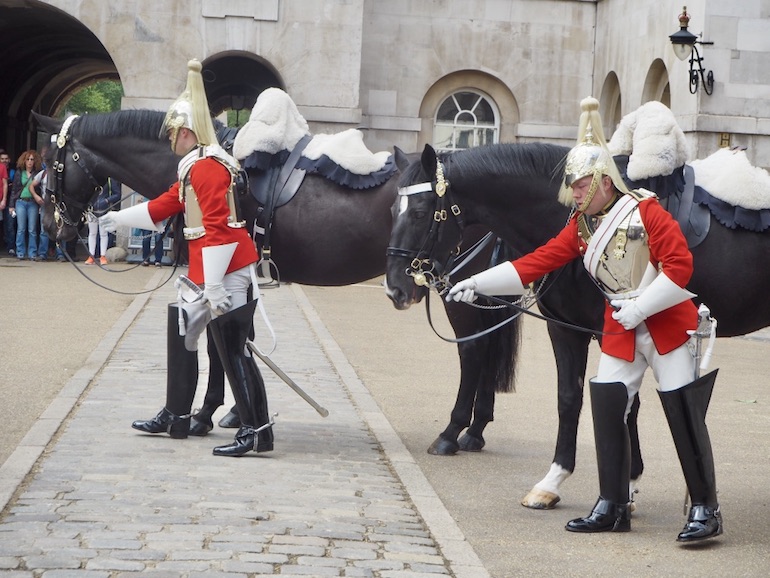 London St James’s Park – Horse Guard Parade: Changing of the Guard. Photo Credit: © Ursula Petula Barzey.
London St James’s Park – Horse Guard Parade: Changing of the Guard. Photo Credit: © Ursula Petula Barzey.
7. The Guardsmen are all experienced soldiers who have fought in conflicts across the world. They volunteer for this guard duty as it is an honour and a privilege to serve the Monarch so personally.
8. Two cavalry regiments called the Household Cavalry also form part of the Queen’s Guard and are stationed at Horseguards on Whitehall. They have their own Changing of the Guard Ceremony. The two regiments are the Lifeguards and the Blues and Royals. Both Prince William and Prince Harry served in the Blues and Royals but were never involved in guarding their grandmother the Queen.
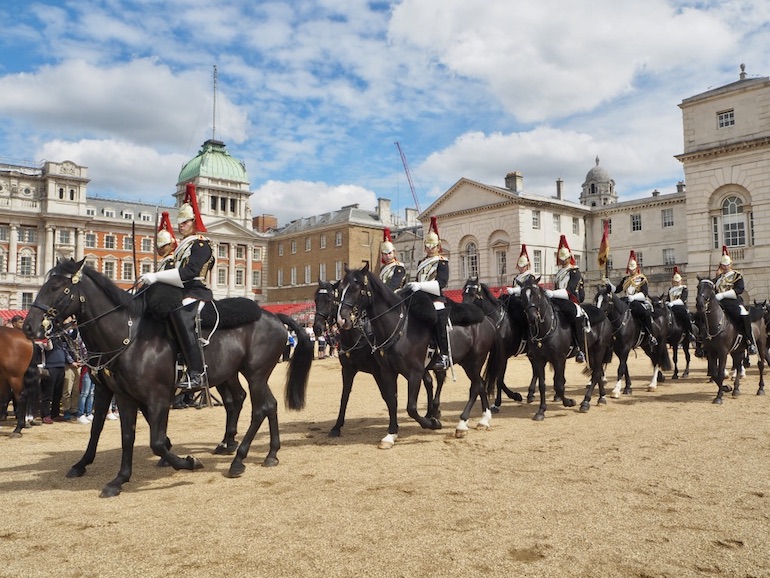 London St James’s Park – Horse Guard Parade: Changing of the Guard. Photo Credit: © Ursula Petula Barzey.
London St James’s Park – Horse Guard Parade: Changing of the Guard. Photo Credit: © Ursula Petula Barzey.
9. Royal Gun Salutes are fired on special occasions such as the Queen’s Birthday. The basic salute comprises 21 rounds being fired. If the guns are in a Royal Park or Royal Palace then another 20 are added. Because the Tower of London is in the City of London a further 21 are added here as well. When Prince Phillip’s birthday coincided with Queen Elizabeth’s official birthday on 10th June 2006 the Tower of London salute comprised a record breaking 124 rounds taking about 20 minutes.
10. One afternoon in 1894 Queen Victoria called in unexpectedly to visit her Household Cavalry guards at Horseguards and found them to be drunk and taking part in gambling. To prevent a re-occurrence she ordered a Defaulters Parade and Inspection to take place daily at 4pm for the next 100 years. Despite the time limit passing the inspection is still carried out to this day.
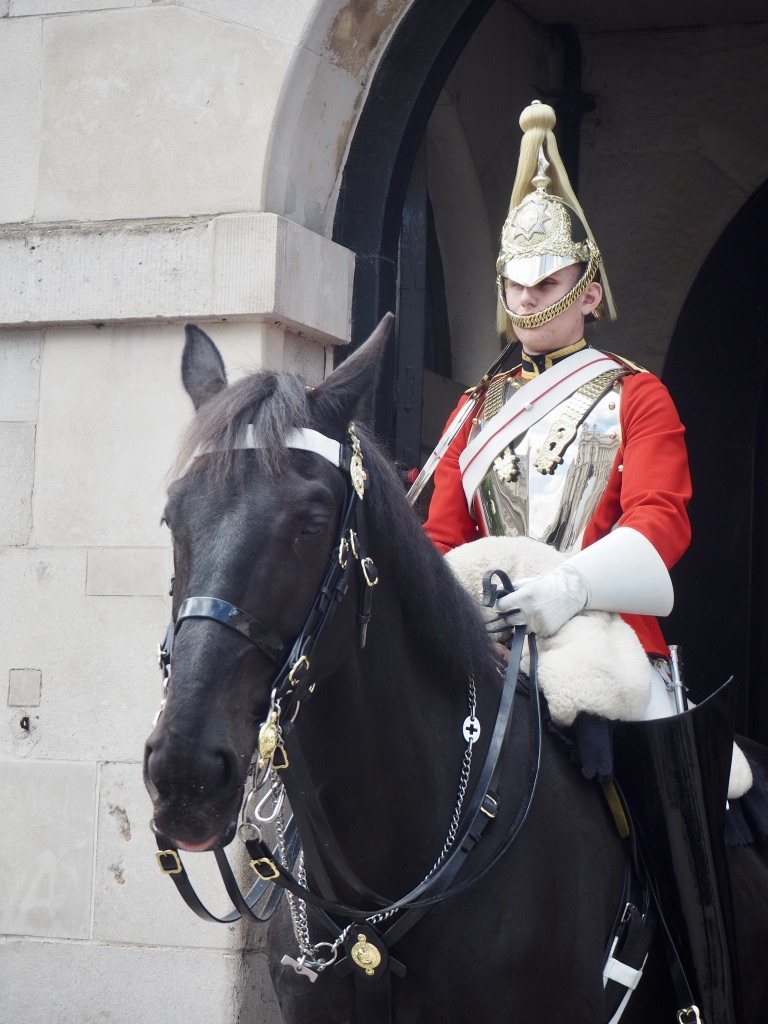 London St James’s Park – Horse Guard Parade: Changing of the Guard. Photo Credit: © Ursula Petula Barzey.
London St James’s Park – Horse Guard Parade: Changing of the Guard. Photo Credit: © Ursula Petula Barzey.
The pageantry of the Changing of the Guard is a wonderful sight to see and experience but because it is very popular it does get very crowded. Blue Badge Tourist Guides can help you get to the best places to see and hear all the different elements of this classic ceremony. The stirring sights and sounds of a troop of Guardsmen marching down the Mall to Buckingham Palace with a military band playing is a highlight of many peoples trip to London.



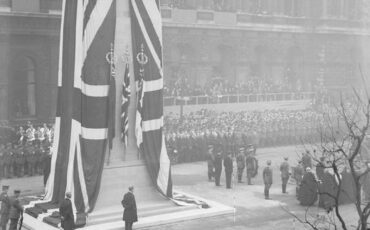
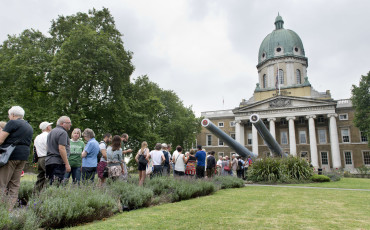


Leave a Reply